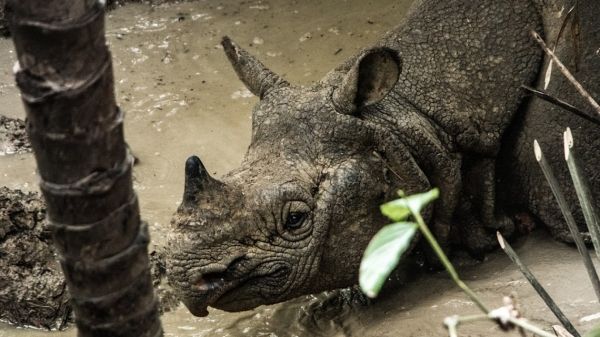Rhinoceroses are instantly recognizable by their rumpled gray skin, immense snouts and iconic horns, but not so much their voices.
That could change thanks to the efforts of Montana Stone ’19, who is working to document the vocalizations of Javan rhinos through a collaboration with the Lab of Ornithology’s Bioacoustics Research Program and Indonesia’s Ujung Kulon National Park.
Stone’s project began in summer 2017, when she visited West Java as part of the Conservation with Communities for One Health course. Funded through Engaged Cornell, the One Health course sends multidisciplinary teams of undergraduate and Doctor of Veterinary Medicine students to Indonesia, Uganda and the Republic of the Congo to collaborate with groups like the Jane Goodall Institute in Africa and the Alliance of Integrated Forest Conservation in Indonesia.
Working with course leader Robin Radcliffe, senior lecturer in wildlife and conservation medicine, Stone began analyzing the sounds of rhinos captured on archival video recordings from Ujung Kulon and the World Wildlife Fund (WWF) over the last decade. While the park uses camera traps to monitor the size of the critically endangered rhino population, no one had focused on the vocalizations before.
Continue reading at Cornell University.
Image via Cornell University.


